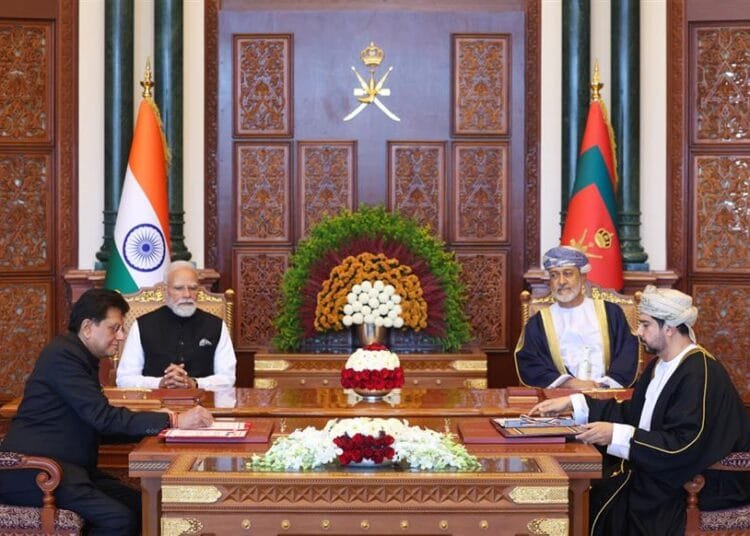Precast concrete reduces waste by using recycled steel
The prefabricated construction market in India is set to grow by 12.6% from 2025 to 2029, reaching a value of Rs.3.19 trillion, according to a ResearchAndMarkets report dated 12 Aug.
It grew 14.8% annually, reaching Rs.1.73 trillion in 2025, following on a CAGR of 17.3% during 2020-24, projected the “India Prefabricated Construction Market Intelligence and Future Growth Dynamics”.
India’s prefabricated construction sector is transitioning from experimental to mainstream. With labor shortages, cost pressures, and urgent housing and infrastructure demands, prefab offers a clear value proposition, speed, consistency, and compliance, the report said.
The government’s housing and urban missions, PPPs, and emergency deployments have given prefabrication significant legitimacy. Leading players like L&T, Tata, and Everest are scaling production, technology, and delivery models to meet rising demand, while digital fabrication tools, modular steel platforms, and green-certification alignments reinforce credibility https://www.bseindia.com/.
Looking ahead, automation, BIM-integrated factories, and precision robotics will enable higher-quality, lower-cost output. Retrofit panels and modular pods will expand across education, healthcare, and urban renewal sectors.
Precast exports position India as a regional hub, offering pathways to new markets. Public-sector adoption through state-led social infrastructure and smart-city deployments will further strengthen the ecosystem https://www.nseindia.com/.
Executives should treat prefab as a strategic pillar: investing in manufacturing, materials science, digital tools, and policy engagement. By building integrated supply chains, enabling regulatory frameworks, and fostering PPPs, leaders can elevate prefab from a sectoral solution to a national infrastructure enabler.
Outlook for India’s Prefabricated Construction Industry
Address labor constraints and productivity needs: Prefab is increasingly critical as labor shortages challenge on-site productivity; leading firms like L&T invest in modular tech and training to meet demand.
Leverage government support for affordable housing: PMAY and Smart Cities initiatives are actively adopting prefabricated concrete, steel, and panel systems, which are emphasized in national Light House and urban renewal programs.
Expand beyond housing into infrastructure and data centres: Prefab extends into industrial, warehousing, and digital infrastructure, supporting the rapid rollout of e-commerce hubs and modular data centre units.
Key Trends & Developments
Deploy Multi-Material Modular Systems: Concrete prefabrication dominates, chosen for strength and affordability, especially in affordable housing and public projects. Steel frame systems (like Nest-In from Tata Steel) gain traction in commercial, residential, and industrial sectors.
Adopt Digital & Automated Fabrication: BIM tools, 3D printing pilots, and robotic assembly facilities are emerging supporting precision, quality, and faster build times.
Advance Sustainability through Green Design: Using recycled steel, insulated panels, and precast concrete reduces waste and aligns with IGBC/GRIHA certifications; solar-integrated options are emerging.
Support Industrial & Digital Infrastructure Growth: Prefab warehouses and logistics campuses are expanding in Tier?2/3 markets; DRDO flight modules and data centre pods are showcasing modular capability.
Build Strategic Partnerships to Scale
Strengthen Government-Industry Collaboration: PPP models and state-level emergency housing (such as in Manipur and Ayodhya) integrate prefab to deliver fast, regulated output.
Tie Leading EPCs with Manufacturing Scale: L&T, Tata Realty, and Everest have opened prefabrication facilities supporting large-scale delivery of residential, infrastructure, and defense projects.
Expand Export Opportunity Through Precast Alliances: Indian precast manufacturers are scaling into export markets, leveraging competitive costs and government support.
Identify Core Growth Drivers
Affordable housing demand and urbanization: Prefabs answer the urgent need for scalable, rapid housing delivery, endorsed by the PMAY and Smart City frameworks.
Labor deficits and productivity pressure: Prefabrication enables factory-based production to offset on-site labor shortfalls.
Sustainability mandates and material efficiency: Energy regulation, green certification, and eco-awareness drive the adoption of precast and insulated prefab systems.
Infrastructure expansion in logistics/tech: Growth of e-commerce and data centers fuels demand for prefab warehouses and telecom/data pods.
Forecast Future Trends
Scale factory automation and BIM workflows: Robotics, digital twins, and AI-enabled quality control will be central in future prefab factories.
Increase modular retrofit and expansion solutions: Prefab panels will upgrade existing building stock for energy performance and resilience.
Promote export of precast components: Indian suppliers will grow exports of modular precast solutions, supported by cost advantage and quality improvements.
Embed prefab in public health & education infrastructure: Schools, clinics, toilets, and disaster relief shelters built using prefab methods will be expanded through PPP and state-led programs.
Deepen local manufacturing and logistics ecosystems: Fab-production clusters near infrastructure corridors will minimize transport friction and support modular rollouts.
Company featured in the report are L&T (Larsen & Toubro), Tata, Everest, Tata Steel (via its Nest-In brand) and Tata Realty. Fiinews.com










